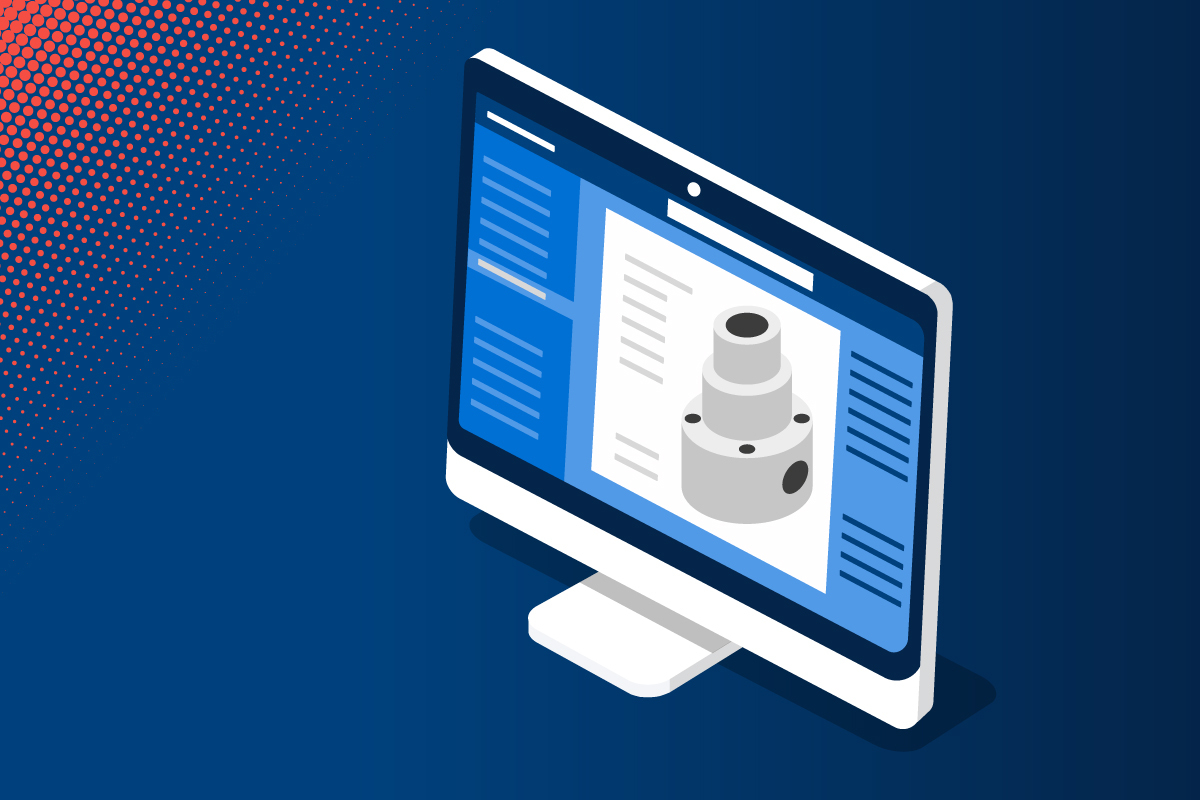How to get 3D models to technical writers
We recently considered whether 3D models were useful for technical writers. Since there is a lot to be said for three-dimensional representations – a few problems notwithstanding – we will now take a closer look at how to obtain usable data and what needs to be taken into account when creating 3D models.

3D Data for Technical Writing
3D data are already available in many manufacturing companies. In most cases, 3D models have already been created during the product development phase using M-CAT systems such as Autodesk Inventor or Solid Edge. Once created, these models are usually entered into a product lifecycle management (PLM) system where the different versions can be managed alongside additional, supplementary data.
In addition, an engineering bill of materials (EBoM) is usually compiled in the ERP system during product development. This records all the components and materials used in the manufacture of the device and is essentially the “map” and inventory for the entire product.
With the models and the EBoM together, we actually have everything we need as technical writers. However, the 3D models are far too big for use in technical documentation; a single model often consists of several hundred GB of data. These models are therefore not (yet) suitable for technical writing purposes and for publication on a website, for example.
Editing 3D Models as a Technical Writer
Sometimes, however, 3D models are already available in more data-saving “lightweight” formats. This may be the case if the system used to manage the spare parts catalog (EPC) also works with 3D models, for example. In this case, a complete database is already available to the technical writers.
If there are no such lightweight formats in the company so far, then the 3D models can also be transformed in the technical writing department itself using one of the authoring tools available on the market for the secondary use of 3D models. The advantage of this software is that the license costs are significantly lower than for complete systems, plus the training time for technical writers is reduced due to the smaller range of functions. There is a whole range of suitable systems on the market. The most important thing when choosing the right one for you is that the software is capable of randomizing dimensions and removing metadata (see more on this in our blog post).
3D Models in the CCMS
Now the technical writer has to decide in which way users are to be presented with the instructions containing the 3D models: as a 3D PDF or as an HTML application. HTML has become the standard format for publishing instructions containing 3D models. The viewer for the models is usually supplied by the 3D authoring tools and can be conveniently integrated into the website as JavaScript. There is therefore no need for the customer to do or install anything to view the models – a requirement that would otherwise make the use of 3D documents doomed to fail. However, this solution is only possible on web servers; file-based, static documentation (e.g., supplied on a DVD) must therefore usually continue to rely on 3D PDF.
When 3D models are hosted on websites, the WebGL standard – which enables a high-performance experience for the user even on mid-range PCs – is used. WebGL is a standard that all common authoring tools offer as an export format.
After they have been exported from the authoring tool, the 3D models are imported as resources into the component content management system (CCMS) of the technical writing department, where they can be referenced from the content, similar to images and videos.
In SCHEMA ST4, the system automatically detects that 3D content has been included at the referencing location. SCHEMA ST4 then takes this into account when producing the target formats and automatically generates the customized JavaScript code that ensures the model is displayed. This functionality is a standard feature of SCHEMA ST4 and can be used out of the box. Experienced users can also use Online Media Designer (OMD) to customize the functionality themselves and tailor it even more precisely to their needs.
All in all, working with 3D models is much easier than you might think at first. Often there are already good usable data available in the company. And even if these are not yet available, a good usable lightweight model can be created with a little training. After that, handling in the CMS is a breeze. The way is therefore clear for all technical writers to unleash the power of 3D.
Other articles from Quanos
This might also interest you

„Doku-Lounge“: Auf dem roten Sofa mit Kerstin Berke und Philipp Eng
Moderatorin Kerstin Berke und Marketingspezialist Philipp Eng sind das Duo vor und hinter dem Mikro der „Doku-Lounge“…